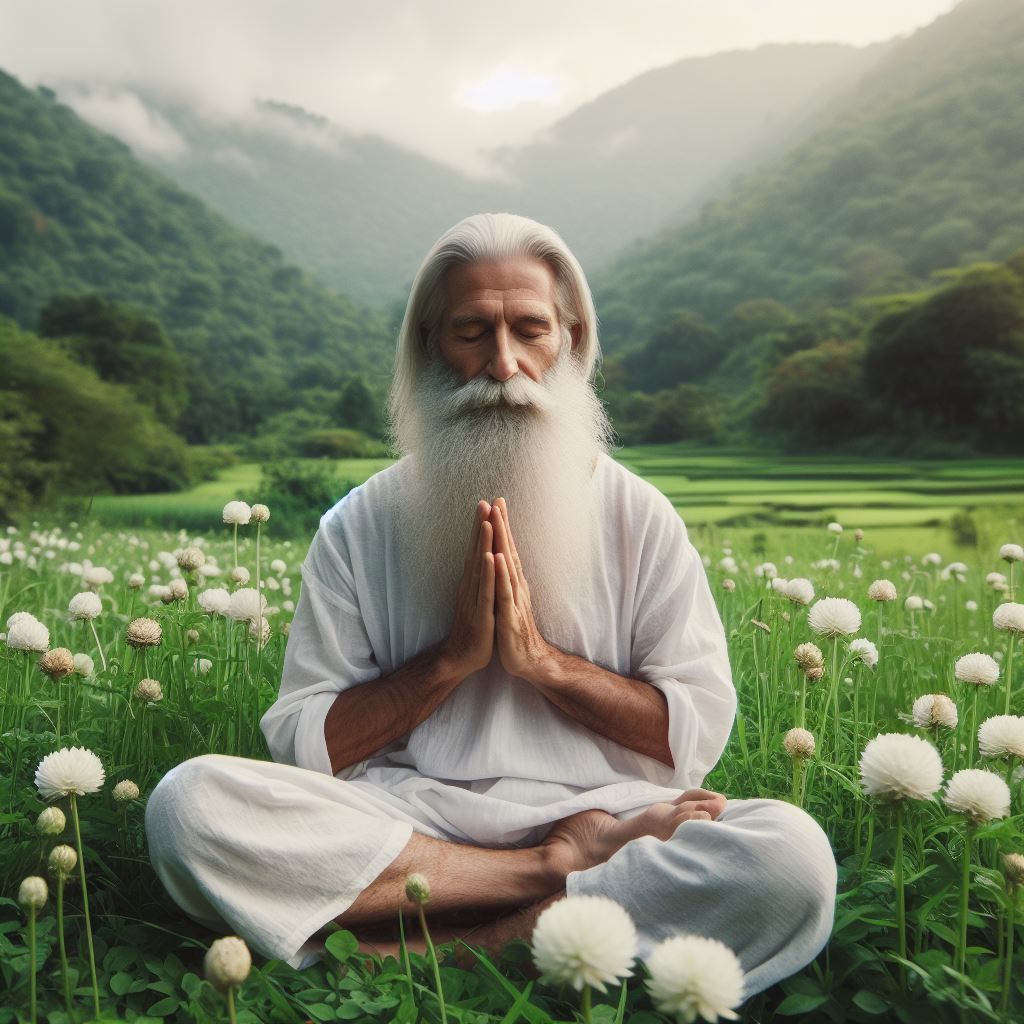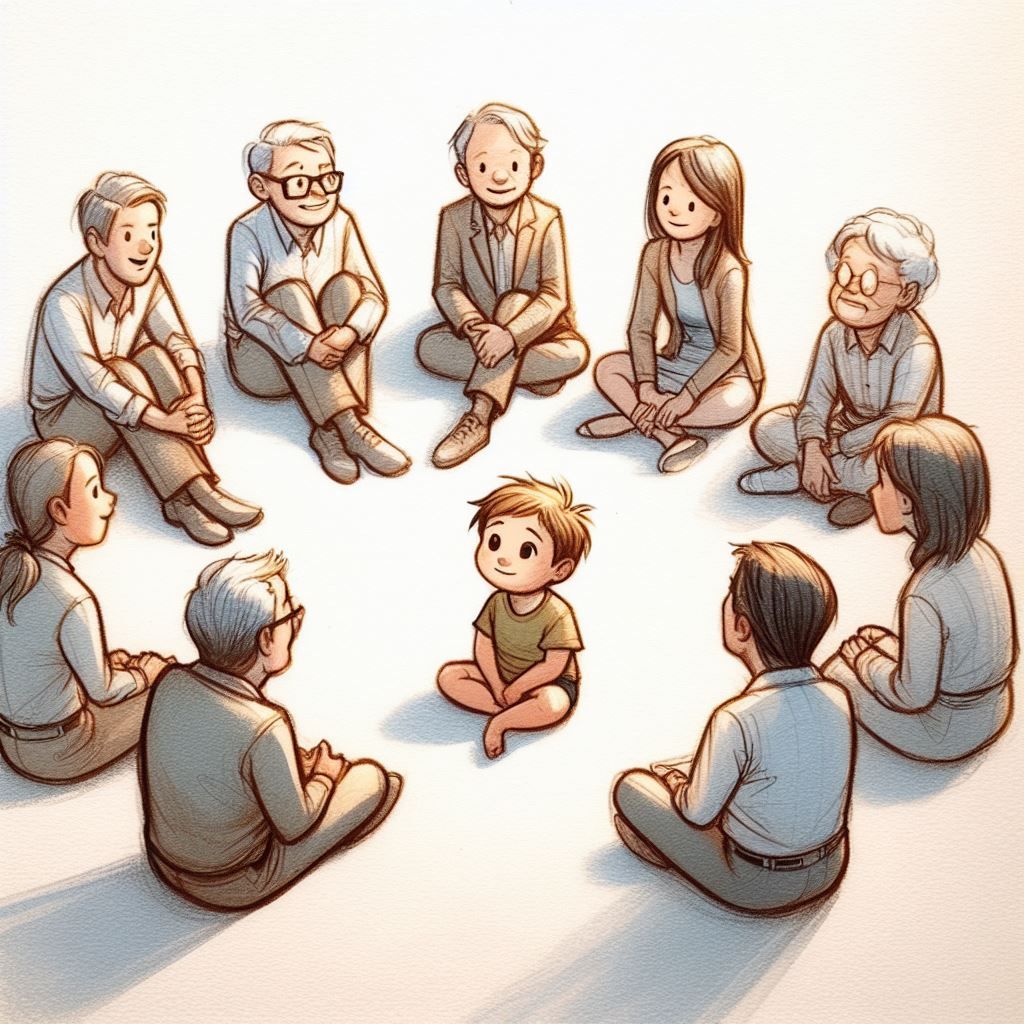Ever feel like your mind is a hamster on a wheel, perpetually spinning and getting nowhere?
We’ve all been there, even seasoned meditators. Meditation, a practice rooted in ancient traditions, offers a path to inner peace and clarity. But what if the idea of sitting still for an hour fills you with dread?
Here’s the key: focusing on quality over quantity and consistency over duration
unlocks the true power of meditation.
We’ll explore how to gradually increase your meditation duration without sacrificing the transformative experience.
Quality First: Letting Go of Expectations
While longer meditation sessions can lead to deeper experiences, aiming solely for extended duration can be counterproductive. Meditation is about quieting the mind and simply being present. Setting a time target can introduce pressure and ego attachment to how long you sit. This defeats the purpose of letting go and connecting with your inner wisdom.
Gradual Progress: Building Confidence and Comfort
If you want to meditate longer, take a gradual approach. Break down a long session into shorter, more manageable ones. For instance, three 20-minute sessions might be easier than a single hour. In between sessions, stand up, stretch gently, and do some light breathing exercises before starting the next one. Gradually increase the duration of these shorter sessions as you become more comfortable. This approach trains both your mind and body. Similar to building muscle, meditation requires consistency. Completing these shorter sessions builds confidence and fosters the belief that longer meditations can be effortless. Ultimately, long meditations are only beneficial when achieved effortlessly. Struggling to focus or enduring pain won’t lead to significant results, and may even cause discouragement. Be gentle with yourself and prioritize consistency over length.
Preparing for Deep Meditation: Comfort and Focus
To prepare for longer meditations, incorporate relaxation techniques like yoga stretches and breathing exercises before you begin. If you experience pain or discomfort, it likely signifies a posture issue. Adjust your seating to support relaxed muscles without slouching.
Here are some additional tips:
– Find a time that works for you:
Consistency is key, so choose a time you can realistically meditate each day,
even if it’s just for a few minutes.
– Eliminate disturbances:
Find a quiet and undisturbed place to meditate for longer periods.
– Create a dedicated space:
Having a designated meditation area can signal to your brain that it’s time to focus and relax.
Samadhi: A State of Oneness (Optional Section)
Samadhi, in the context of meditation and yoga, refers to a state of prolonged, deep meditation characterized by union, absorption, and bliss. It’s considered the ultimate goal in Patanjali’s eight-limbed yoga system (Ashtanga Yoga). This system emphasizes a holistic approach, where achieving samadhi is a culmination of consistent practice across all eight limbs, not just meditation itself.
The Eight Limbs of Ashtanga Yoga:
1. Yama (Ethical Observances):
Cultivating ethical principles creates a foundation for deeper meditation.
2. Niyama (Self-Discipline):
Observing self-discipline strengthens resolve and creates a stable environment for meditation.
3. Asana (Physical Postures):
Yoga postures prepare the body for meditation by improving flexibility,
strength,
and stamina.
4. Pranayama (Breath Control):
Pranayama techniques help regulate the flow of energy in the body and mind,
calming the nervous system and preparing the mind for deeper concentration.
5. Pratyahara (Sense Withdrawal):
Withdrawing the senses from external stimuli allows you to turn your attention inward and focus on your inner world.
6. Dharana (Concentration):
Focusing your attention on a single point trains the mind to become more focused.
7. Dhyana (Meditation):
Sustaining focused attention without interruption is the practice of meditation itself.
8. Samadhi (Absorption):
This is the ultimate state of absorption where the mind transcends limitations and becomes one with the object of meditation.
Reaching samadhi is a rare and challenging feat, but the journey itself offers numerous benefits like increased self-awareness, inner peace, and mental clarity.
While not everyone may achieve samadhi, the practice of meditation itself can lead to significant improvements in your well-being.
ACTIVE LISTENING
Meditation Variety for Individual Needs
According to a meditation coach training program, various meditation techniques cater to different preferences. This highlights the importance of exploring diverse practices to find the most suitable one. Among these techniques, “Active Listening” stands out for its unique approach, as detailed in the book “Sensory Perception Training” by JC McDonald and Karl Welz.
Active Listening: A Focus on Sound
Active Listening meditation deviates from traditional methods by utilizing a specific breathing pattern followed by a focus on white noise. Here’s briefly how it works:
1. Relaxation Induction: Participants begin by creating a relaxed state, potentially using techniques like autogenic relaxation as advocated by Welz in other works.
2. Breathing Retention with Release: After achieving relaxation, a deep breath is taken, held for 10 seconds, exhaled, and then held again for 10 seconds. This cycle is repeated with progressively longer breath holds (15 seconds, 20 seconds, and 25 seconds). During the final cycle, the breath is held on exhale for a slightly longer duration to induce a brief, controlled panic response.
3. Chemical Shift and Focus: This intentional panic response, followed by the relief of inhalation, is believed to trigger a release of specific neurochemicals within the body. This chemical shift is thought to promote a particular physiological state conducive to meditation.
4. Focus on White Noise: Throughout the practice, participants keep their eyes closed and focus their attention solely on the white noise, gently redirecting their awareness back to the sound when their mind wanders. The goal is to maintain this focused listening for at least 10 minutes.
Benefits and Applicability
Active Listening meditation offers an alternative for individuals who find focusing on internal sensations like breath or visual stimuli challenging. The technique leverages a natural biochemical response to potentially induce a state of heightened mental alertness while achieving physical relaxation. Although the technique is safe it’s best to be guided by an experienced meditation coach.
Regularly practicing active listening can help reduce anxiety. This is because active listening combines techniques like focused breathing and concentration, which can improve your self-control and mental focus. In turn, focused breathing increases oxygen to your blood, promoting relaxation by calming your nervous system and stimulating the release of endorphins, hormones known for their mood-boosting effects.
Note on Chemical Reaction
While the text mentions a “chemical reaction” causing a panic response, the specific neurochemicals involved and their precise effects require further scientific exploration.
There’s likely not a single chemical involved, but rather a cascade of responses triggered by hypoxia.
Fight-or-Flight Response: When oxygen supply is limited, the body releases hormones like adrenaline and cortisol to increase heart rate, breathing, and blood sugar levels, preparing the body for a stressful situation. This can explain the panic-like feeling during the breath-holding phase.
Neurotransmitter Release: Limited oxygen can also affect the release of neurotransmitters like dopamine and serotonin, which can influence mood and alertness.
Gassho Meditation
Gassho Meditation: A Simple and Effective Technique for Mindfulness Cultivation

Gassho meditation, literally translated as “two hands coming together,” is a posture and practice that can be readily integrated into various mindfulness training programs. While lesser-known in broader meditation circles, it offers a powerful yet accessible method for cultivating focus, inner peace, and heightened awareness.
The Gassho posture involves bringing the hands together at the heart center with palms gently touching. The thumbs may rest lightly on each other or remain separate, and fingertips typically point upwards. Practitioners often focus on the subtle sensation of the middle fingers meeting while maintaining awareness of the breath. Eyes are typically closed to facilitate inward focus.
Beyond its connection to Reiki, Gassho meditation offers numerous benefits for practitioners of all levels. The closed hand position can promote a sense of containment and focus, fostering relaxation and calming the mind. Additionally, this practice can enhance awareness of subtle energy flow within the body.
The Gassho posture offers room for exploration. Practitioners may experiment with different hand placements, such as bringing the thumbs together or creating a slight opening between the middle fingers. These variations can be explored to find what resonates most with the individual.
For Reiki practitioners, Gassho meditation holds particular significance. Performing Gassho before and after sessions serves to connect with the universal healing energy and prepare both mind and body for the practice.
Gassho meditation’s simplicity and effectiveness make it a valuable tool for anyone seeking to deepen their mindfulness practice. By quieting the mind and promoting inner peace, this practice can serve as a cornerstone for fostering well-being and personal growth.
© Jurgens Pieterse. All rights reserved. 2024.
Full moon gratitude list for April
On this full moon, reflecting on the blessings since the last new moon:
For adventures that broaden my world: My trip to Brazil opened my eyes to new cultures and deepened my understanding of humanity.
For a team that empowers me: I’m grateful for each member of my work team, their reliability, and the knowledge I gain from them.
For the heart-melting joy of grandchildren: Having them visit filled our home with laughter and unforgettable moments.
For a wife who inspires me: I admire my wife’s strength and resourcefulness in adapting to a quieter space.
For connecting with loved ones: The lunch with my son and daughter was a cherished time to share life experiences.
For creating a sanctuary of peace: Incorporating Feng Shui principles made my meditation room a haven of tranquility.
Under the full moon’s radiant glow, I offer heartfelt thanks for these gifts, big and small. May my gratitude continue to blossom and my heart overflow with joy.
On the Threshold of Being: Existence in essence.

Today, I embark on a sacred pilgrimage inwards, towards the hidden chamber of the Ich, the core of my being. This journey, I hope, will lead me to a state of unification, a point of confluence where self and higher self embrace.
As I journey deeper, I witness a magnificent exchange of energy, a symphony of light within the very essence of my existence. Like a curious child perched on the edge of a wise gathering, I observe the subtle dance between the known self and the unknown divine.
But who is this observer that arises within me? Who is the child gazing upon the observer? This question, never contemplated before, hangs heavy in the air, a riddle whispered on the wind.
It feels like an inner monad of innocence, untouched by the world’s harsh wisdom yet separate from the ego’s worldly attachments. This presence, a facet of self, yearns for the guidance of the higher self, yet possesses a radiant wisdom of its own.
Is this the innocent child of being, residing eternally in the present moment, bathed only in love? Untainted by the world, it exists in its purest form, untouched by the grasping tendrils of the ego. Perhaps it is the soul, or perhaps simply a stroke of cosmic grace.
This essence, a phantom presence, is devoid of drama and physical encumbrances. It is a self-contained being, radiating a powerful light from the heart. Its awareness exists solely in the ‘now’, not seeking growth or knowledge, for it is already complete within itself.
This state of harmonious innocence, an embodiment of pure beingness, vibrates with a profound beauty. It is a reminder that wholeness lies within, an exquisite dance of presence and awareness, forever perfect in its present moment, existing in the essence of being.
© Jurgens Pieterse – All rights reserved. 2024
